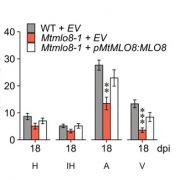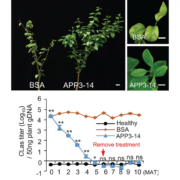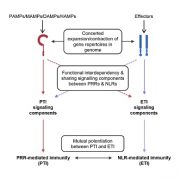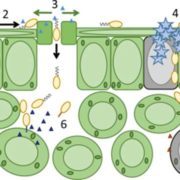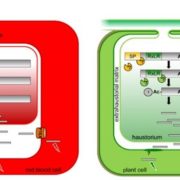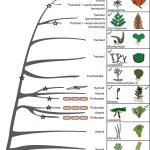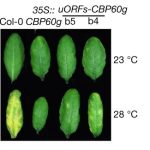Removing one wheat protein kinase provides resistance to rust fungi (Cell)
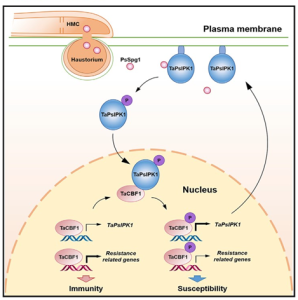 Tolerance against a pathogen can be achieved by either overexpressing a resistance-related gene, or removing a susceptibility-related gene. Overexpression of defense-related genes generally comes with side effects such as decreased growth and yield. On the other hand, a susceptibility factor might have a physiological role and its inactivation may affect agronomic traits. An effective strategy to protect plants from pathogens would be to identify and inactivate genes that promote susceptibility, but first these genes have to be found. In an effort to develop wheat that are resistant to the fungal stripe rust pathogen Puccinia striiformis f. sp. tritici (Pst), Wang et al. identified a promising susceptibility-related gene in wheat, encoding a protein kinase TaPsIPK1. They also identified a Pst effector PsSpg1 that binds to TaPsIPK1 and promotes its nuclear localization, which is crucial for the susceptibility. In the nucleus, TaPsIPK1 phosphorylates the TaCBF1d transcription factor, altering the expression of its target genes. Specifically, phosphyorylated TaCBF1d appears to both decrease expression of defense-related genes, and at the same time, enhance expression of TaPsIPK1. Overexpression of TaPsIPK1 or PsSpg1 makes wheat more susceptible to Pst. Conversely, downregulation of TaPsIPK1 in wheat provides resistance against wheat stripe rust without compromising yield, demonstrating that this susceptibility gene is a promising new tool against this fungal pathogen. Summary by Kamal Kumar Malukani, @KamalMalukani. Cell, 10.1016/j.cell.2022.06.027
Tolerance against a pathogen can be achieved by either overexpressing a resistance-related gene, or removing a susceptibility-related gene. Overexpression of defense-related genes generally comes with side effects such as decreased growth and yield. On the other hand, a susceptibility factor might have a physiological role and its inactivation may affect agronomic traits. An effective strategy to protect plants from pathogens would be to identify and inactivate genes that promote susceptibility, but first these genes have to be found. In an effort to develop wheat that are resistant to the fungal stripe rust pathogen Puccinia striiformis f. sp. tritici (Pst), Wang et al. identified a promising susceptibility-related gene in wheat, encoding a protein kinase TaPsIPK1. They also identified a Pst effector PsSpg1 that binds to TaPsIPK1 and promotes its nuclear localization, which is crucial for the susceptibility. In the nucleus, TaPsIPK1 phosphorylates the TaCBF1d transcription factor, altering the expression of its target genes. Specifically, phosphyorylated TaCBF1d appears to both decrease expression of defense-related genes, and at the same time, enhance expression of TaPsIPK1. Overexpression of TaPsIPK1 or PsSpg1 makes wheat more susceptible to Pst. Conversely, downregulation of TaPsIPK1 in wheat provides resistance against wheat stripe rust without compromising yield, demonstrating that this susceptibility gene is a promising new tool against this fungal pathogen. Summary by Kamal Kumar Malukani, @KamalMalukani. Cell, 10.1016/j.cell.2022.06.027


